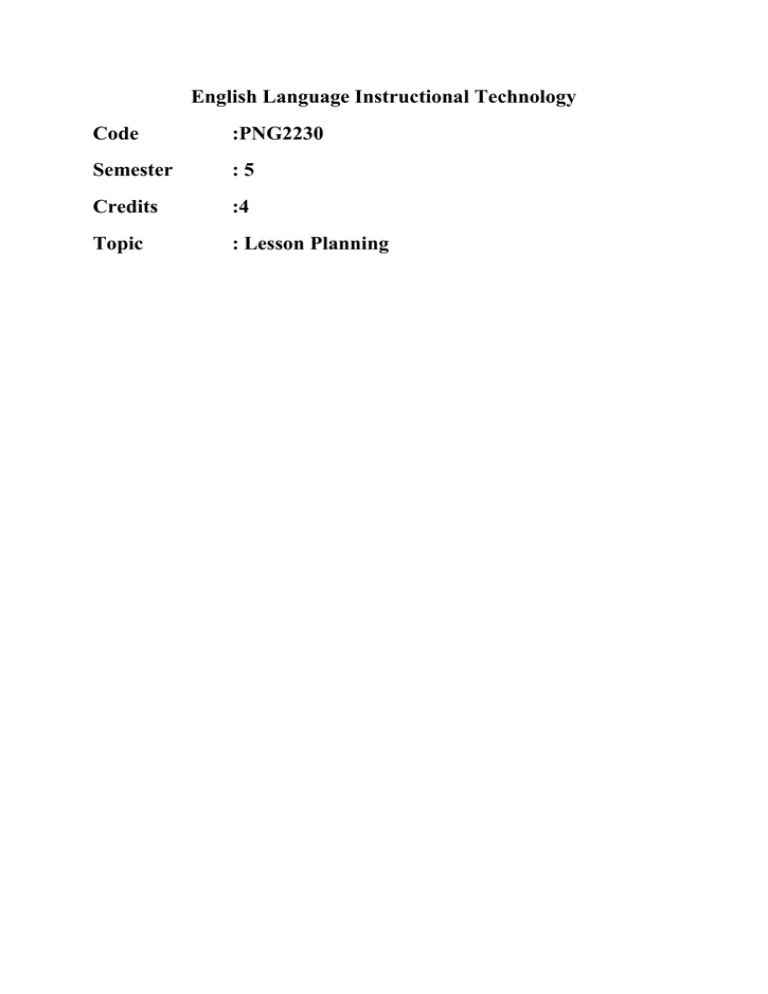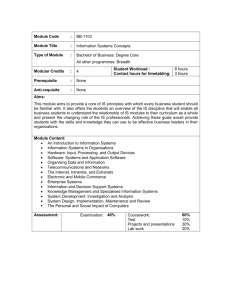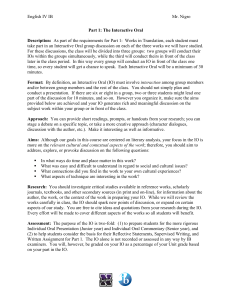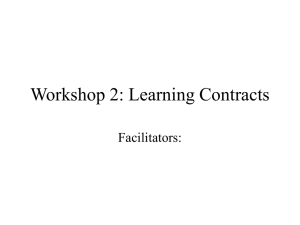English Language Instructional Technology Code :PNG2230
advertisement

English Language Instructional Technology Code :PNG2230 Semester :5 Credits :4 Topic : Lesson Planning Lesson Planning A lesson plan is a set of notes that helps teachers to think through what they are going to teach and how they are going to teach it (Spratt, et all, 2005). Why Lesson Planning To give the lesson a framework, an overall shape To remind teachers what they intended to do, especially if they get distracted or momentarily forget what they had intended Components of a Lesson Plan Level and number of learners Timetable fit Aims Assumptions Anticipated language problems Possible solution Teaching aids, materials, equipment Procedures Timing Interaction patterns Homework Identifying and Selecting Aims • Aims: what we want learners to learn or be able to do at the end of a lesson, a sequence of lessons or a whole-course. Aims should reflect what we hope the students will be able to do, not what we are going to do. Main aim: to describe the most important thing we want to achieve in a lesson or a sequence of lessons. Subsidiary aims: to show the language or skills learners must be able to use well in order to achieve the main aim. Personal aim: to show what we would like to improve about our own personal aims as teachers. Example: Main aim Subsidiary aims Persona l Aims To practice making polite requests in the context of making holiday arrangements. Grammar: to revise modal auxiliary verbs. Functional exponents: Could/ Would you...? Vocabulary: to consolidate lexis for travel, accomodation Phonology: to focus on intonation. Speaking: to give controlled oral practice. To improve my organiza tion of the whitebo ard; to give clearer example s. Teaching Procedure Referring to basic concepts and principles of CLT, three areas of focus should be the main parts of the teaching-learning design. This should be formulated into the following procedure. 1. Warm Up: - attracting and directing students’ mind and heart towards the thematic context through various activities which involve every student - motivating students to learn to acquire the communicative competency which will be useful for their life 2. Content Focus: emphasizing understanding of the content the input text (oral or written) through various relevant activities, including activities which encourage students to think critically (e.g. through inferential questions), applying both the top-down approach and bottom-up approach (or interactive approach receptive skills 3. Language focus: emphasizing the learning of language forms, involving relevant activities/techniques 4. Communication focus: emphasizing the learning of how to use English for communication through communicative activities, ranging from guided activities to information-gap activities 5. Closing: - summarizing all the points (involving students through tasks) making students aware of the usefulness of the skills already learned for fulfilling real life communication purposes





